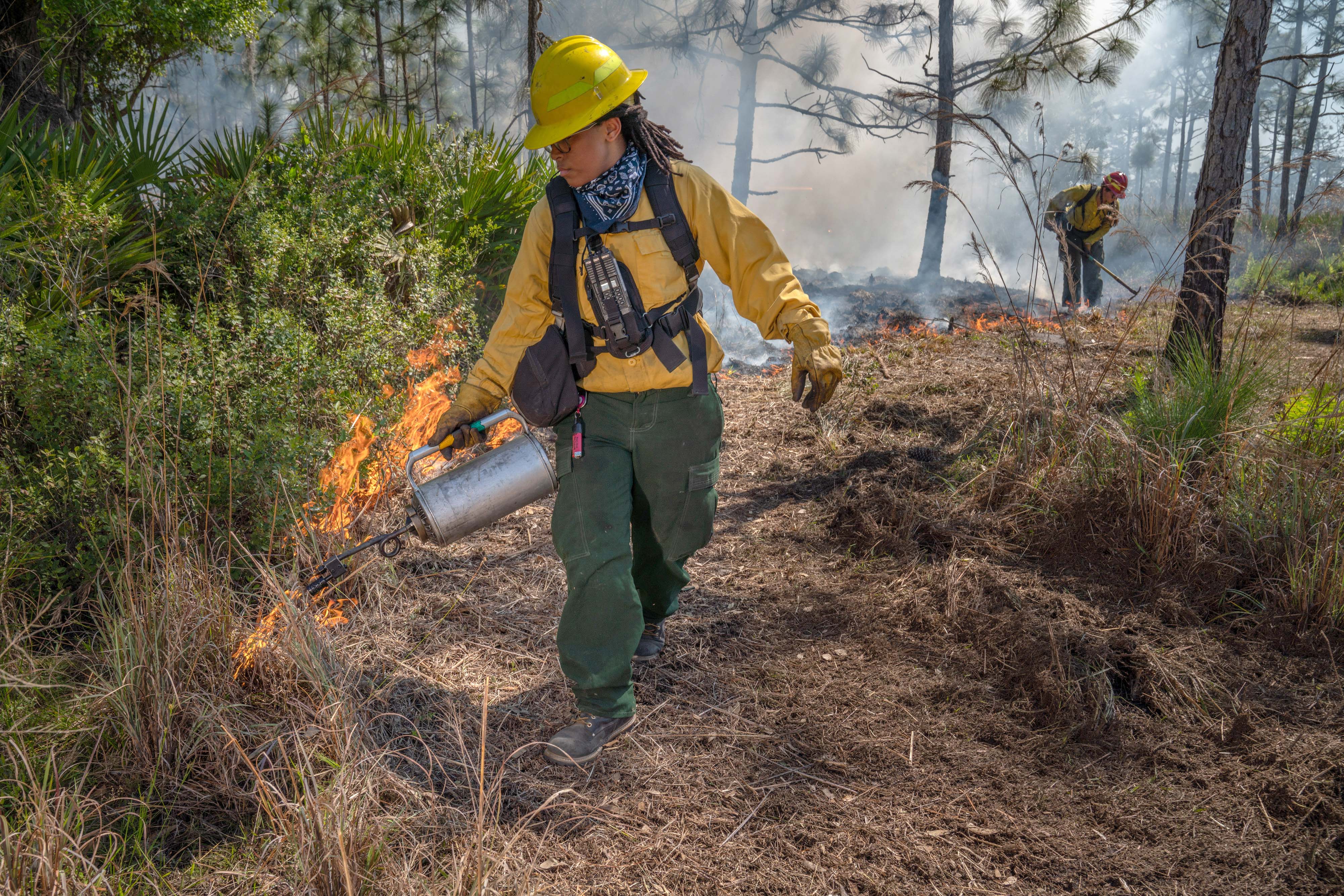Media Contacts
-
Jay Lee
The Nature Conservancy
Phone: 301-640-1615
Email: jay.lee@tnc.org -
Clarke Williams
Aspen Institute
Phone: 703-554-7378
Email: clarke.williams@aspeninstitute.org
Aspen Institute and The Nature Conservancy (TNC) released today the “Roadmap for Wildfire Resilience: Solutions for a Paradigm Shift,” a problem identification and solutions document that will help direct federal and other resources towards addressing the wildfire crisis. TNC will debut the Roadmap at a briefing on Capitol Hill March 8. Aspen Institute will cite the release of the Roadmap at Aspen Ideas: Climate in Miami Beach, Florida, March 6-9.
Roadmap for Wildfire Resilience
Download the RoadmapThe Roadmap is the product of a partnership begun in 2021 between TNC and Aspen Institute to advocate for a paradigm shift in approaching and funding solutions to the wildfire crisis in the American West. It is a companion piece to TNC’s 2021 Wildfire Resilience Funding Report. Focusing on two aspects of the Wildland Fire Leadership Council’s National Cohesive Wildland Fire Management Strategy, fire-adapted communities and resilient landscapes, the Roadmap brings together lessons from decades of policy and practice with forward-thinking approaches that incorporate new technology and knowledge. It was developed over the course of a year, five regional stakeholder roundtables, and a summit, which collectively solicited professional input from over 250 experts in forest and fire management, representing federal, state, local, and Tribal Nation authorities, and private sector interests in forest products, insurance, and finance.
The Roadmap is comprised of eight key themes: landscape scale and outcome-driven; controlled burning; resilient communities and landscapes; forest products; partnerships, finance, and insurance; equity and access; recover for resilience; and technology and innovation. It identifies problems and associated policy solutions requiring action from Congress, the executive branch, and partners, like states, Tribal Nations, NGOs and others. The Roadmap also integrates the five cross-cutting themes of workforce capacity, Tribal Nation partnerships and ecological knowledge, community capacity and collaboration, natural climate solutions, and communications, highlighting the importance of social, economic, and ecological strategies.
Quote: Darci Vetter
As drought, a century of fire suppression, and inadequate funding for forest health continue to contribute to uncharacteristic wildfire seasons, we need different solutions.
“For decades, the wildfire season in the West was predictable; this is no longer the case as the climate crisis fuels more intense and more destructive fires. As drought, a century of fire suppression, and inadequate funding for forest health continue to contribute to uncharacteristic wildfire seasons, we need different solutions,” said Darci Vetter, Global Head, Policy and Government Relations for TNC. “This Roadmap provides those solutions to the federal government and partners and provides opportunities to apply the considerable resources available in the bi-partisan Infrastructure Investment and Jobs Act (IIJA) and Inflation Reduction Act (IRA) – a once-in-a-generation investment in forest and rangeland health, community safety and workforce development.”
”The rising cost and prevalence of wildfires and droughts, especially in the West, has broadened the American public’s understanding and shown the urgent demand for resiliency solutions that are not only rooted in science and evidence-based practices but also center equitable accessibility and partnership,” said Greg Gershuny, Executive Director of the Aspen Institute’s Energy & Environment Program. “To protect communities from the impacts of climate change, our ability to collectively embrace new strategies will require trust and a willingness to invest in an all-of-society approach to problem-solving. This Roadmap is a perfect example of what collective investment and strengthened trust could look like.”
Recent nationwide public opinion research confirmed that a vast majority of voters recognize the threat of wildfire and support federal spending to address the issue. Four in five voters support increased federal investment to reduce the threat and intensity of wildfires proactively. Wildfires and droughts are top-tier concerns for American voters, just behind inflation, housing, and government waste, and this Roadmap aims to build on public concern to drive solutions.
The Aspen Institute is a global nonprofit organization committed to realizing a free, just, and equitable society. Founded in 1949, the Institute drives change through dialogue, leadership, and action to help solve the most important challenges facing the United States and the world. The Institute has campuses in Aspen, Colorado, and Washington, D.C. It also maintains offices in New York City and has an international network of partners. www.aspeninstitute.org.
The Nature Conservancy is a global conservation organization dedicated to conserving the lands and waters on which all life depends. Guided by science, we create innovative, on-the-ground solutions to our world’s toughest challenges so that nature and people can thrive together. We are tackling climate change, conserving lands, waters and oceans at an unprecedented scale, providing food and water sustainably and helping make cities more sustainable. The Nature Conservancy is working to make a lasting difference around the world in 81 countries and territories (40 by direct conservation impact and 41 through partners) through a collaborative approach that engages local communities, governments, the private sector, and other partners. To learn more, visit nature.org or follow @nature_press on X.



